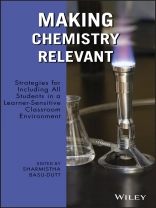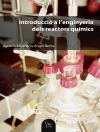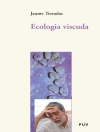Unique new approaches for making chemistry accessible to diverse students
Students’ interest and achievement in academics improve dramatically when they make connections between what they are learning and the potential uses of that knowledge in the workplace and/or in the world at large. Making Chemistry Relevant presents a unique collection of strategies that have been used successfully in chemistry classrooms to create a learner-sensitive environment that enhances academic achievement and social competence of students.
Rejecting rote memorization, the book proposes a cognitive constructivist philosophy that casts the teacher as a facilitator helping students to construct solutions to problems. Written by chemistry professors and research groups from a wide variety of colleges and universities, the book offers a number of creative ways to make chemistry relevant to the student, including:
* Teaching science in the context of major life issues and STEM professions
* Relating chemistry to current events such as global warming, pollution, and terrorism
* Integrating science research into the undergraduate laboratory curriculum
* Enriching the learning experience for students with a variety of learning styles as well as accommodating the visually challenged students
* Using media, hypermedia, games, and puzzles in the teaching of chemistry
Both novice and experienced faculty alike will find valuable ideas ready to be applied and adapted to enhance the learning experience of all their students.
İçerik tablosu
Contributors vii
Preface ix
Editor Profile xiii
1. Philosophical, Cognitive, and Sociological Roots for Connections in Chemistry Teaching and Learning 1
Donald J. Wink
2. Chemistry and the Environment: A SENCER Model Course 27
Amy M. Shachter
3. CORD’s Applications in Biology/Chemistry:Teaching Science in the Context of Major Life Issues 47
Bonnie Rinard and Mark Whitney
4. The Science of Terrorism: An Interdisciplinary Course for Nonscience Majors 67
Laura Post Eisen
5. Chemistry for the Twenty-First Century: Bringing the ‘Real World’ into the Lab 87
Gautam Bhattacharyya
6. Student-Centered, Active Learning Pedagogies in Chemistry Education 107
Gail Marshall
7. Creating a Relevant, Learner-Centered Classroom for Allied Health Chemistry 127
Laura De Long Frost
8. Working with Chemistry: A Laboratory Inquiry Program 145
Julie Ellefson
9. Making Chemistry Relevant to Science and Engineering Majors 169
ulie K. Bartley, Sharmistha Basu-Dutt, Victoria J. Geisler, Farooq A. Khan, and S. Swamy-Mruthinti
10. The Center for Authentic Science Practice in Education: Integrating Science Research into the Undergraduate Laboratory Curriculum 193
Cianán B. Russell, Anne K. Bentley, Donald J. Wink, and Gabriela C. Weaver
11. Enriching the Chemistry Experience for All Students: Sensorial Experiments That Include Visually
Challenged Students 207
Maria Oliver-Hoyo
12. Media in Chemistry Education 227
William J. Donovan
13. A Walk on the Applied Side: Developing Hypermedia for Physical Chemistry 251
Erik M. Epp and Gabriela C. Weaver
14. Effective Use of Games and Puzzles in the Chemistry Classroom 267
Thomas D. Crute III
Index 283
Yazar hakkında
SHARMISTHA BASU-DUTT is an Associate Professor of Chemistry and Director of Engineering Studies at the University of West Georgia. She has received numerous grants and awards for her groundbreaking projects that integrate education, engineering, and chemistry.












